
Super Mario World, known in Japan as Super Mario World: Super Mario Bros. 4, is a platform video game developed by Nintendo EAD and published by Nintendo for the Super Nintendo Entertainment System (SNES). It was released in Japan in 1990, North America in 1991 and Europe and Australia in 1992. The player controls Mario on his quest to save Princess Peach and Dinosaur Land from the series' antagonist Bowser and the Koopalings. The gameplay is similar to that of earlier Super Mario games: players control Mario through a series of levels in which the goal is to reach the goalpost at the end.

Wario's Woods is a puzzle video game developed by TEC and published by Nintendo for the Nintendo Entertainment System. It was released in Japan and North America in 1994 and Europe in 1995. A spin-off of the Mario series, players control Toad in his mission to defeat Wario, who has taken control of the Peaceful Woods. Gameplay revolves around clearing each level by using bombs to destroy groups of enemies. The game also features a multiplayer mode that allows two players to compete against each other.
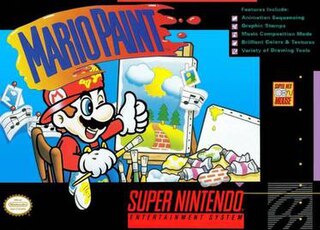
Mario Paint is a 1992 art creation video game developed by Nintendo Research & Development 1 (R&D1) and Intelligent Systems and published by Nintendo for the Super Nintendo Entertainment System. Mario Paint consists of a raster graphics editor, an animation program, a music composer, and a point and click minigame, all of which are designed to be used with the Super NES Mouse peripheral, which the game was packaged and sold with. Per its name, the game is Mario-themed, and features sprites and sound effects that are taken from or in the vein of Super Mario World.

The Adventures of Rocky and Bullwinkle and Friends is a video game released by THQ between 1992 and 1994 for Game Boy, NES, SNES, and Sega Genesis adapted from The Adventures of Rocky and Bullwinkle and Friends TV series.
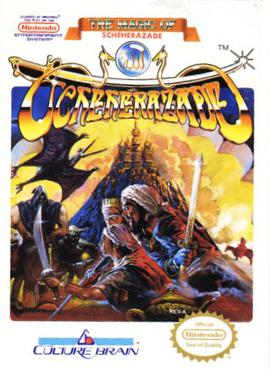
The Magic of Scheherazade is an action-adventure/role-playing video game (RPG) developed and released by Culture Brain for the Nintendo Entertainment System (NES). The game was released in 1987 in Japan and 1990 in North America. The plot is based on Middle Eastern folktales found in One Thousand and One Nights. It involves an amnesic hero traveling through time in an attempt to rescue the princess Scheherazade from the evil wizard Sabaron, who has summoned a horde of demons to bring chaos to the once peaceful land of Arabia. The Magic of Scheherazade is divided into chapters and incorporates elements of both action-adventure and RPG gameplay styles. In each chapter, the player character can freely explore an overworld in a top-down perspective. The player engages hostile enemies with various weapons and spells through both real-time solo action on the overhead map and random, turn-based battles fought alongside befriended allies.

The Addams Family: Pugsley's Scavenger Hunt is a platform game released by Ocean in 1992 in Europe and 1993 in North America. It is based on the 1992 animated series. It was released in North America for the Super Nintendo Entertainment System in February 1993, Game Boy in July 1993, and the Nintendo Entertainment System in August 1993.
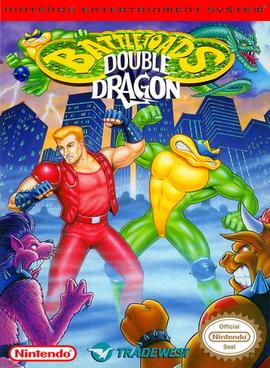
Battletoads/Double Dragon is a 1993 beat 'em up developed by Rare and published by Tradewest. It was originally released for the Nintendo Entertainment System and later ported to the Mega Drive/Genesis, Super NES, and Game Boy. Retro-bit Publishing has re-released the 8-bit NES version in early 2022 with plans to release the 16-bit versions later this year.

Kirby's Dream Course is a 1994 miniature golf video game developed by HAL Laboratory and Nintendo EAD and published by Nintendo for the Super Nintendo Entertainment System (SNES). A spin-off of the Kirby series and the first released for the SNES, players control the pink spherical character Kirby through a series of courses by launching him towards the goal hole at the end. Kirby can hit enemies to collect power-ups that grant him unique abilities, such as those that allow him to destroy certain obstacles or fly around the level.

Jurassic Park is an action-adventure video game for the Super Nintendo Entertainment System (SNES), based on the 1990 novel and 1993 film of the same name. It was developed and published by Ocean Software in 1993 in North America and PAL regions, and published by Jaleco in 1994 in Japan.

Super Star Wars: The Empire Strikes Back is a 1993 action video game developed by LucasArts and Sculptured Software and published by JVC Musical Industries for the Super Nintendo Entertainment System. It is based on the 1980 film The Empire Strikes Back. It is the sequel to Super Star Wars. The game was followed by a sequel, Super Star Wars: Return of the Jedi. Unlike its predecessor, Nintendo wasn’t involved in its publishing. The game was re-released on the Wii's Virtual Console in North America on August 24, 2009 and in the PAL regions on October 2, 2009, alongside the other games in the Super Star Wars series.

Batman: Return of the Joker is a 1991 platform video game, the follow-up to Sunsoft's first Batman game on the Nintendo Entertainment System. Unlike that game, which was based on the 1989 Batman film directed by Tim Burton, Return of the Joker is entirely self-contained and based more on the modern comic book iteration of Batman, but the Batmobile and the Batwing are featured from the 1989 film. A remake of Return of the Joker, titled Batman: Revenge of the Joker, was released on the Sega Genesis by Ringler Studios in 1992. A Super NES version of Revenge of the Joker was completed but never officially released; a ROM image surfaced online in later years.
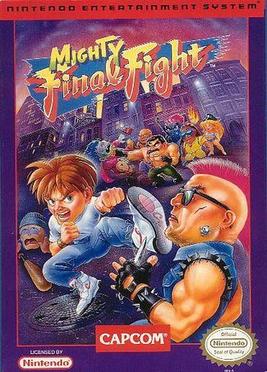
Mighty Final Fight is a side-scrolling beat-'em-up released by Capcom for the Nintendo Entertainment System in 1993. It is a spinoff of Capcom's 1989 arcade game Final Fight, which was previously ported to the Super NES. Unlike the CP System arcade classic and its SNES ports, the characters in this edition are depicted in a comical childlike "super deformed" or "chibi" art style in the same spirit as Famicom games such as both Konami's Kid Dracula and Namco's Splatterhouse: Wanpaku Graffiti.
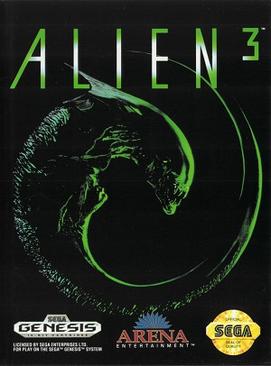
Alien 3 is a run and gun game based on the 1992 film of the same name. It was released for the Genesis and Amiga in 1992, then for the Commodore 64, Game Boy, Game Gear, Nintendo Entertainment System, Super Nintendo Entertainment System, and Master System.

The Addams Family is a platform game based on the 1991 film of the same name and developed and published by Ocean Software. It was released for home consoles such as the Super Nintendo Entertainment System, computers such as the Amiga, and handheld consoles like the Game Boy.

Dragon: The Bruce Lee Story is a fighting video game developed and originally published by Virgin Interactive Entertainment in Europe for the Sega Genesis in June 1994. It is based on the 1993 film of the same name, which is a semi-fictionalized account of the life of Hong Kong-American actor and martial artist Bruce Lee. Following the events of the movie, players take control of Bruce Lee across several stages that takes places in different time periods of his life and fight against some of his adversaries.
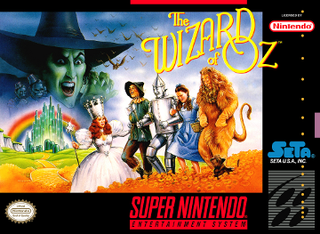
The Wizard of Oz is a 1993 platform video game released for the Super Nintendo Entertainment System and loosely based on the 1939 film The Wizard of Oz. Developed by Manley & Associates, it was published by SETA Corporation and released in North America in 1993 and in Europe in 1994. The player assumes the role of Dorothy, the Scarecrow, the Tin Man, or the Cowardly Lion in a series of levels containing hidden areas, mazes, and puzzles to bring Glinda's magic ruby slippers to the Wizard of Oz.

Super Mario All-Stars is a 1993 compilation of platform games for the Super Nintendo Entertainment System (SNES). It contains remakes of Nintendo's four Super Mario games released for the Nintendo Entertainment System (NES) and the Famicom Disk System: Super Mario Bros. (1985), Super Mario Bros.: The Lost Levels (1986), Super Mario Bros. 2 (1988), and Super Mario Bros. 3 (1988). As in the original games, players control the Italian plumber Mario and his brother Luigi through themed worlds, collecting power-ups, avoiding obstacles, and finding secrets. The remakes feature updated graphics—including the addition of parallax scrolling—and music, modified game physics, a save feature, and bug fixes.

Fun 'n Games is a compilation video game developed by Leland Interactive Media and released for the Super NES and Mega Drive/Genesis platforms in 1993 and 1994. A game with the same name was released in 1995 for the 3DO Interactive Multiplayer, but it differs slightly in gameplay and was developed by Williams Entertainment Inc. The North American Super NES version of the game is considered to be one of the more rare games released for the console.

The Lost Vikings is a puzzle-platform game developed by Silicon & Synapse and published by Interplay. It was originally released for the Super NES in 1993, then subsequently released for the Amiga, Amiga CD32, MS-DOS, and Mega Drive/Genesis systems; the Mega Drive/Genesis version contains five stages not present in any other version of the game, and can also be played by three players simultaneously. Blizzard re-released the game for the Game Boy Advance in 2003. In 2014, the game was added to Battle.net as a free download emulated through DOSBox. In celebration of the company's 30th anniversary, The Lost Vikings was re-released for Microsoft Windows, Nintendo Switch, PlayStation 4 and Xbox One as part of the Blizzard Arcade Collection in February 2021.

Time Trax is a 1994 action-platform video game developed by Malibu Interactive and published by Malibu Games for the Super Nintendo Entertainment System. It is based on the television series of the same name, which aired from 1993 to 1994. The story follows police Captain Lambert as he tries to stop criminal fugitives from changing history and gaining control of the future, with aid from his supercomputer assistant. The player controls Lambert across eight levels, apprehending enemies using a stunner weapon capable of sending them back to the future. The player can also use martial arts to defeat enemies, or use a time ability to slow them down.



















